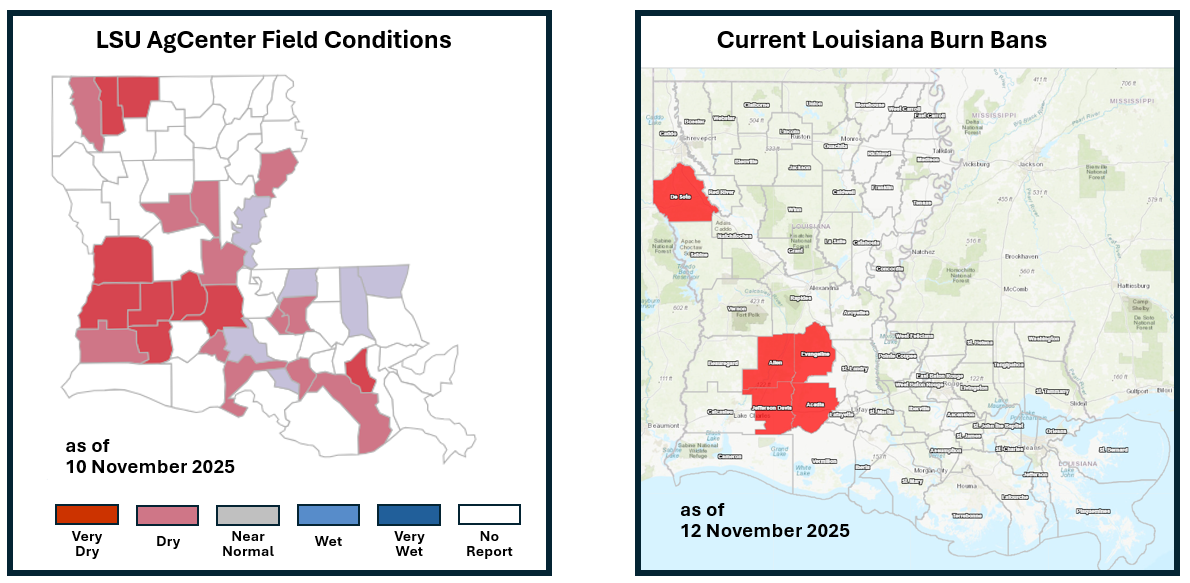Watching the Wells: Drought Returns to the Bayou State
By Jay Grymes
Louisiana State Climatologist
This time, I have a question for you?
Are you hearing of any water supply issues with regard to wells?
I’m interested, even if it is only isolated residential or private agricultural wells.
Louisiana is nowhere near as dry (yet!) as the circumstances that developed during 2023 … but we are seeing some pockets of “critical” dryness in sections of the state. Note that the LA Drought Team introduced two areas of D2 (‘Severe Drought’) to the latest Weekly Drought Monitor. It’s the first time that any part of the state was tagged with D2 since late 2024.
We acknowledge that some Louisiana ag producers are noting that their local conditions are more dire than D2 implies … and the forecast for another ‘mainly-dry’ 7 days ahead will add to those concerns (and add to soil-moisture deficits). To those local producers: the Drought Team hears you!
Note that many of the state’s parish ag agents are assisting in the drought-monitoring effort by submitting weekly assessments of field conditions for their service areas (LSU AgCenter Field Conditions). We hope that more agents will routinely contribute to this product in the coming weeks.
Be aware that D2 is ‘severe’ and significant for a reason: over the long-term, we would expect to see D2 issued for any location only once every one to two decades, on average. We might not consider that rare, but it certainly is uncommon.
Yet from a statewide perspective, this is the fifth time that some part of the state has been designated as D2 (or worse) in the last four years. (Note that these occurrences of D2-to-D4 over that last 4 years have not all been in the same parts of the state, but there are some areas that have multiple D2-D4 occurrences during that spell.)
You might think that Louisiana -- the ‘wettest’ state in the Lower 48 -- would be much more drought resistant … but conditions in recent years reflect the vagaries and variability of Louisiana climate (largely driven by rainfall) even over the relatively short term. Also remember that Louisiana drought is a different critter compared to something like West Texas drought: our drought definitions are based on what is normal (and NOT normal) locally and therefore differ from the yardsticks of normal/not-normal in other climate regions.
The LA Drought Team … and the USDM national authors … could be busy monitoring the Bayou State in the coming months. The NWS Climate Prediction Center’s (CPC) winter outlook for rainfall leans towards “dry weeks ahead” for much of the state. However, that is not a guarantee that drought conditions will worsen in the coming weeks. Indeed, Louisiana’s normal winter rainfall exceeds the environmental “thirst” (moisture demand). With near-normal winter rainfall, rain surpluses not only result in near-saturated soils but occasionally generate runoff that can overwhelm the state’s rivers and bayous.
Also, the CPC’s outlook does not give us a sense of “how dry?” it will be in the coming months … nor any guidance as to “what the distribution of winter rainfall will look like?” users must be careful not to over-interpret this outlook tool. However, while the CPC outlook does not necessarily imply worsening drought in the coming weeks, it does not offer much hope for an end to current drought conditions either.




